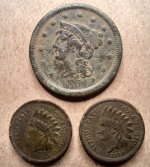GuerillaBill
Full Member
- Feb 12, 2008
- 247
- 27
- Detector(s) used
- Garrett AT Pro, Minelab Excalibur II, Whites BeachHunter 300
As planned, I hit the treasure coast this past week.
I hoped to time my hunts so they'd start the day after a big storm hit the beach.
The storm did hit, in the form of a cold front, with temps below freezing wednesday and thursday night.
The wind was blowing at 20+ mph, with a wind chill near freezing for most of the day thursday. It warmed up on Friday and Saturday.
The big problem was the wind was blowing sand onto the beach, and since the beaches were already pretty much sanded in, it didn't help matters.
I started by hitting Archie Call beach just north of Sebastian Inlet, and quickly found a modern earring, and then a few fishing trinkets. But the icy wind chill drove me off the beach.
After a chilly night of camping at Sebastian Inlet state park, I timed my morning hunt to start about an hour before low tide. I parked at the Ampersand beach parking lot, and detected all the way up to the Mclarty treasure museum.
On the way up, I followed the low tide line, and on the way back, I followed the high tide line.
On the low tide line, I found nothing. Nada.
On the high tide line, I did find quite a bit of old iron, and some finds that got my heart beating pretty fast, until I looked closer - more iron.
After 4 hours of hunting, I broke for lunch, and then went to Turtle shores, and walked up about 2 miles where the developments have removed the beach, and regraded it all the way to the water (I thought that was illegal?).
Didn't find much - just a few patches of heavy iron chips. The beach was well sanded in.
That worked out to a full day of hunting, and not much to show, except for many iron chips about the size of a quarter, and one larger object which is not iron, but looks to be several small objects corroded together.
The next morning I hit some of the unmarked beach parking areas which lead to lessor detected beaches. As you can see from the photos below, the beaches were heavily sanded in, and not much to be found.
I eventually decided to head back to my home beach on the west coast of Florida.
The local treasure coast experts say that unless you get a strong storm to stir up the beaches and wash away the sanded in conditions, there won't be much treasure to be found.
I now pretty much agree with them.
I'll plan my next treasure coach trip to coincide with the next major storm.
Bill
I hoped to time my hunts so they'd start the day after a big storm hit the beach.
The storm did hit, in the form of a cold front, with temps below freezing wednesday and thursday night.
The wind was blowing at 20+ mph, with a wind chill near freezing for most of the day thursday. It warmed up on Friday and Saturday.
The big problem was the wind was blowing sand onto the beach, and since the beaches were already pretty much sanded in, it didn't help matters.
I started by hitting Archie Call beach just north of Sebastian Inlet, and quickly found a modern earring, and then a few fishing trinkets. But the icy wind chill drove me off the beach.
After a chilly night of camping at Sebastian Inlet state park, I timed my morning hunt to start about an hour before low tide. I parked at the Ampersand beach parking lot, and detected all the way up to the Mclarty treasure museum.
On the way up, I followed the low tide line, and on the way back, I followed the high tide line.
On the low tide line, I found nothing. Nada.
On the high tide line, I did find quite a bit of old iron, and some finds that got my heart beating pretty fast, until I looked closer - more iron.
After 4 hours of hunting, I broke for lunch, and then went to Turtle shores, and walked up about 2 miles where the developments have removed the beach, and regraded it all the way to the water (I thought that was illegal?).
Didn't find much - just a few patches of heavy iron chips. The beach was well sanded in.
That worked out to a full day of hunting, and not much to show, except for many iron chips about the size of a quarter, and one larger object which is not iron, but looks to be several small objects corroded together.
The next morning I hit some of the unmarked beach parking areas which lead to lessor detected beaches. As you can see from the photos below, the beaches were heavily sanded in, and not much to be found.
I eventually decided to head back to my home beach on the west coast of Florida.
The local treasure coast experts say that unless you get a strong storm to stir up the beaches and wash away the sanded in conditions, there won't be much treasure to be found.
I now pretty much agree with them.
I'll plan my next treasure coach trip to coincide with the next major storm.
Bill
Attachments
Upvote
0


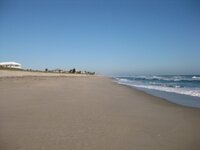
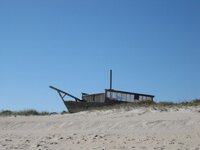
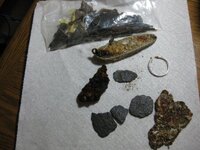
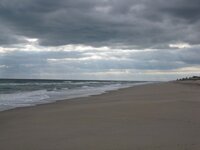
 (joking)
(joking)


